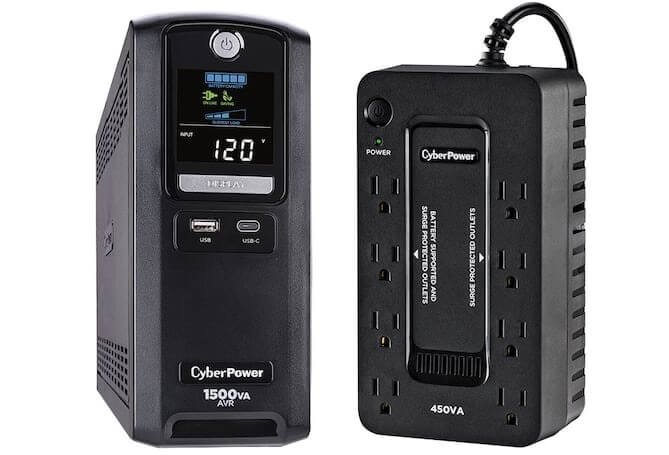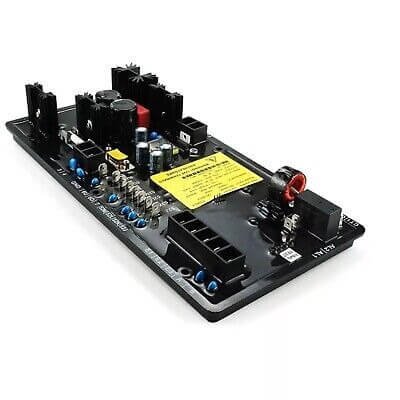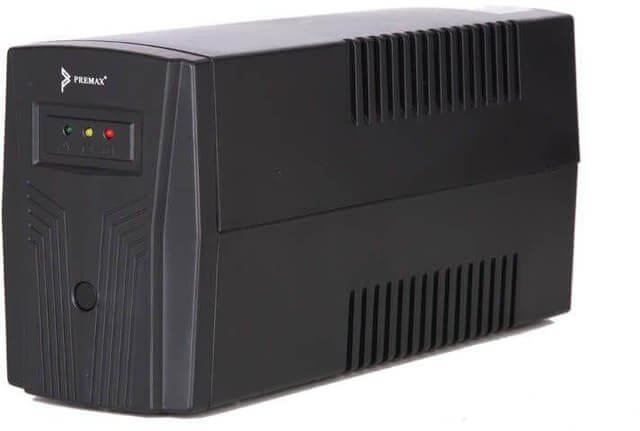Modern UPS systems have moved far beyond simple battery backup. Today’s UPS automatic voltage regulation technology provides comprehensive power conditioning that addresses multiple power quality issues at once. While many people understand the basic battery backup function of UPS systems, fewer know the critical role that integrated voltage regulation plays in protecting sensitive electronics from a wide range of power disturbances.

The integration of UPS automatic voltage regulation is a fundamental shift in power protection philosophy. Instead of just switching to battery power during outages, these advanced systems condition the incoming power to maintain a stable voltage even when utility power is still available. This proactive approach prevents equipment damage and downtime that can happen long before a complete power failure occurs.
Industrial and commercial facilities are full of microprocessor controlled equipment that requires clean, stable power. Traditional UPS designs that only kick in during complete power failures leave equipment vulnerable to the voltage sags, surges and fluctuations that are present in the utility power. Understanding how UPS automatic voltage regulation addresses these issues is key to designing a robust power protection strategy.
Understanding UPS Automatic Voltage Regulation Technology
The question of how UPS with automatic voltage regulation differs from conventional backup systems requires examining the sophisticated power conditioning circuits integrated into modern designs. These systems monitor incoming utility power continuously, detecting voltage variations that could impact connected equipment. When deviations occur, the automatic voltage regulation circuits correct these problems without switching to battery operation, preserving battery life while maintaining optimal power quality.
Traditional UPS systems operate in distinct modes – normal operation on utility power, battery operation during outages, and charging mode when utility power returns. Advanced UPS with automatic voltage regulation adds an intermediate conditioning mode where the system actively corrects voltage problems while remaining connected to utility power. This approach prevents unnecessary battery cycling and provides superior power quality under normal operating conditions.
The voltage regulation circuits within modern UPS systems utilize sophisticated power electronics to provide precise voltage control. These circuits can boost low voltages, buck excessive voltages, and filter harmonic distortion without interrupting power delivery to connected loads. The seamless operation ensures that sensitive equipment receives stable power regardless of utility power variations.
Operational Modes and Control Strategies
Modern UPS automatic voltage regulation systems employ multiple operational modes optimized for different power conditions. The automatic voltage regulator (AVR) mode handles moderate voltage variations without battery intervention, extending battery life significantly. During severe voltage disturbances that exceed AVR correction range, the system seamlessly transitions to battery operation to maintain uninterrupted power delivery.
The control algorithms governing these transitions must balance multiple competing objectives. Rapid response to voltage problems conflicts with system stability requirements, particularly when dealing with dynamic loads that create their own voltage disturbances. Advanced UPS designs incorporate adaptive control strategies that learn from system behavior patterns and optimize their response characteristics accordingly.
Load prioritization represents another sophisticated feature found in premium UPS automatic voltage regulation systems. These designs can selectively protect critical loads while allowing less essential equipment to experience utility power variations. This selective protection strategy maximizes battery runtime for truly critical applications while reducing overall system complexity and cost.
Automatic Voltage Regulator Stabilizer Integration
The integration of automatic voltage regulator stabilizer functionality within UPS systems creates a comprehensive power protection platform that addresses multiple power quality issues simultaneously. This approach eliminates the need for separate voltage stabilization equipment, reducing installation complexity and improving overall system reliability. The combined functionality provides cost advantages while ensuring optimal coordination between different power conditioning functions.
Traditional approaches required separate devices for voltage stabilization, harmonic filtering, and backup power protection. Each device introduced additional potential failure points and required individual maintenance schedules. Modern UPS automatic voltage regulation systems consolidate these functions into integrated platforms that provide superior performance while reducing total cost of ownership.
The automatic voltage regulator stabilizer circuits within advanced UPS designs utilize high-frequency switching technology to achieve precise voltage control with minimal energy losses. These circuits can correct voltage variations as small as 1-2% while maintaining regulation accuracy better than ±1% under varying load conditions. This precision ensures optimal operating conditions for sensitive electronic equipment.
Performance Characteristics and Specifications

Understanding the technical specifications of stabilizer automatic voltage regulator functionality requires examining key performance parameters that determine system effectiveness. Input voltage range defines the span of utility voltage variations that can be corrected without switching to battery operation. Wider correction ranges reduce battery cycling but require more sophisticated power electronics and may impact system efficiency.
Response time specifications become critical when protecting equipment sensitive to brief voltage disturbances. Modern UPS automatic voltage regulation systems achieve correction response times under 4-6 milliseconds, fast enough to prevent most equipment from detecting voltage variations. This rapid response capability protects against voltage sags caused by motor starting, transformer energization, and other transient events common in industrial environments.
Regulation accuracy determines how closely the UPS can maintain target voltage levels under varying load and input conditions. Industrial applications typically require regulation accuracy of ±1% or better to ensure optimal equipment operation. The ability to maintain this accuracy across the full load range and throughout the input voltage correction window demonstrates the sophistication of modern UPS voltage regulation circuits.
Implementation Strategies for Critical Applications
Selecting appropriate automatic voltage stabilizer functionality requires careful analysis of application-specific power quality requirements and equipment sensitivities. Different UPS technologies offer varying approaches to voltage regulation, each with distinct advantages and limitations. Online double-conversion systems provide the highest level of power conditioning but consume more energy during normal operation compared to line-interactive designs with integrated voltage regulation.
The choice between different UPS architectures depends heavily on the nature of protected loads and local power quality conditions. Facilities with relatively stable utility power may benefit from line-interactive UPS automatic voltage regulation systems that provide efficient operation with excellent voltage conditioning. Environments with poor power quality or extremely sensitive loads may require online double-conversion systems despite their higher energy consumption.
Sizing considerations become more complex when UPS automatic voltage regulation functionality is involved. The voltage correction circuits consume additional power that must be accounted for in capacity calculations. Systems operating near their voltage correction limits may experience reduced efficiency and increased thermal stress, impacting long-term reliability and operating costs.
Environmental and Installation Considerations
Modern UPS automatic voltage regulation systems must operate reliably in diverse environmental conditions while maintaining precise voltage control performance. Power electronic components and control circuit accuracy are sensitive to temperature changes and so complex compensation algorithms must be developed to ensure that a specification is met over the range of operating temperatures.
The interrelationship among UPS voltage regulation circuits and other electrical systems in the facility should be taken into consideration in the planning of the installation. Power quality equipment such as harmonic filters, power factor correction capacitors, etc. may affect UPS regulation circuits in unpredictable ways. These interactions must be investigated carefully in order to properly integrate a system and this might involve liaising with equipment manufacturers.
Access to maintenance is an operational aspect that is usually ignored when making initial plans. UPS automatic voltage regulation systems require periodic calibration and component replacement to maintain optimal performance. The designs of the installation should allow proper access to service personnel coupled with proper environmental protection and clearances on safety.
Advanced Features and Monitoring Capabilities
Contemporary UPS automatic voltage regulation systems incorporate sophisticated monitoring and diagnostic capabilities that provide valuable insights into both UPS performance and facility power quality conditions. Real-time data logging captures voltage regulation events, efficiency measurements, and system operating parameters that enable proactive maintenance scheduling and system optimization.
Communication interfaces enable integration with building management systems and remote monitoring platforms. These capabilities allow facility managers to track UPS performance, receive alerts for potential problems, and optimize system operation based on actual usage patterns. The data collected can also support facility power quality studies and equipment lifecycle planning activities.
Predictive maintenance features utilize machine learning algorithms to analyze system operating patterns and predict potential component failures before they occur. These capabilities can significantly reduce maintenance costs while improving system reliability through proactive component replacement and preventive maintenance scheduling.
Economic Considerations and Total Cost Analysis
The factors affecting the price of automatic voltage regulators must be evaluated thoroughly and beyond the initial cost of the equipment must focus on cost of installation, operation, and maintenance of the system, a consideration over the lifecycle of the system. While UPS automatic voltage regulation systems may have higher initial costs compared to basic battery backup units, the integrated voltage conditioning functionality often eliminates the need for separate stabilization equipment, reducing overall project costs.
With adequate voltage control, energy efficiency improvements can bring large cost savings in system operating costs over the operating life of the system. Devices that run at the highest possible voltages usually draw less power and wear out more slowly, which increases the operating life of the equipment and lowers costs to replace it. These considerations can be used to explain why high performance voltage regulation capabilities may be priced at a premium.
Downtime cost considerations frequently drive selection toward more sophisticated UPS automatic voltage regulation systems despite higher initial investments. Expenses incurred as a result of production shutdown due to power quality issues, data corruption, or equipment failure are generally orders of magnitude greater than the expense of a UPS system itself, and therefore extensive power protection is a wise investment in business.
Future Developments and Technology Trends

The evolution of UPS automatic voltage regulation technology continues advancing through improvements in power electronics, control algorithms, and system integration capabilities. Wide bandgap semiconductors enable more efficient voltage correction circuits with faster response times and reduced size requirements. These technological advances support development of more compact and efficient UPS systems with enhanced voltage regulation performance.
Smart grid integration represents an emerging trend that will influence future UPS designs significantly. Advanced systems will coordinate with utility demand response programs, energy storage systems, and renewable energy sources to optimize overall facility energy management while maintaining critical power protection functions.
Artificial intelligence applications show promise for enhancing UPS automatic voltage regulation performance through predictive control strategies that anticipate power quality problems before they occur. These capabilities could enable more proactive power conditioning that prevents equipment stress and extends both UPS and protected equipment service life.
Conclusion
The UPS automatic voltage regulation capabilities in modern systems are a game changer in power protection. These systems give you full spectrum power conditioning and the backup power functionality that defines UPS. Understanding the technical capabilities and implementation considerations of integrated voltage regulation will help you make informed decisions on power protection investments.
The integration of automatic voltage regulator stabilizer in UPS systems eliminates the complexity and reliability issues of separate voltage conditioning equipment. This consolidation gives better performance and reduces total system cost and maintenance. As industrial and commercial facilities become more dependent on sensitive electronic equipment, the comprehensive protection offered by UPS automatic voltage regulation is key to reliable operations.
IET has seven decades of electrical engineering expertise to deliver power protection solutions across Kenya, Uganda and Tanzania. We understand the regional power quality challenges and can specify and implement UPS automatic voltage regulation systems for East African conditions. With presence in the region and power quality expertise, IET has the technical support and local presence to ensure your critical power protection investments are running reliably. Talk to our team today to see how advanced UPS voltage regulation can improve your facility’s power reliability and equipment protection strategy.

Leave a Reply